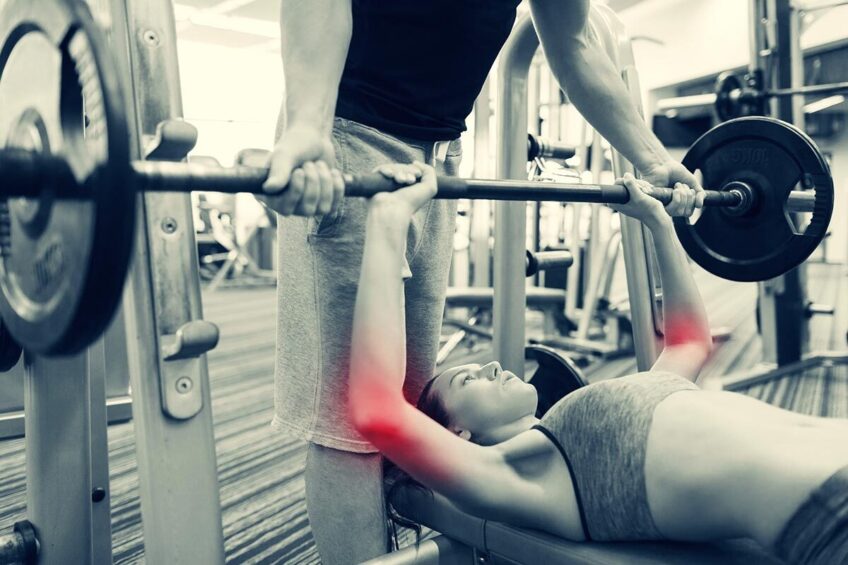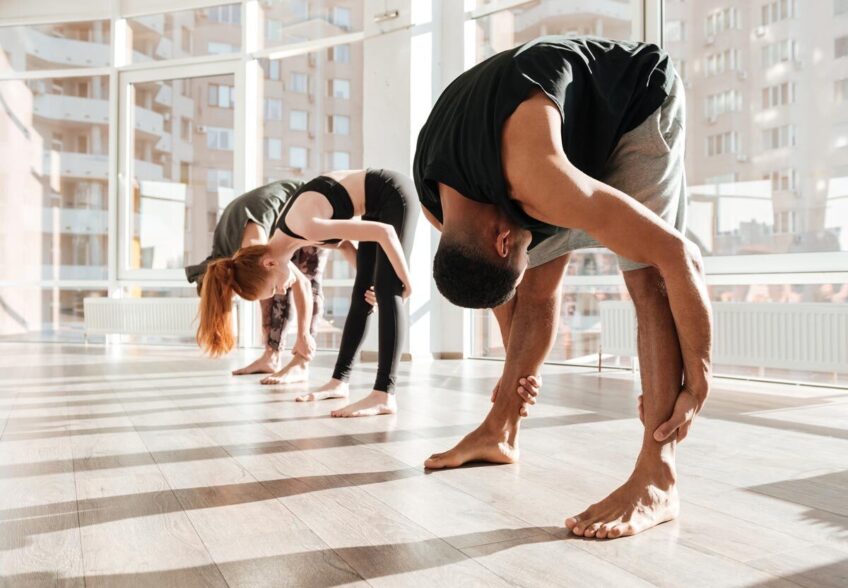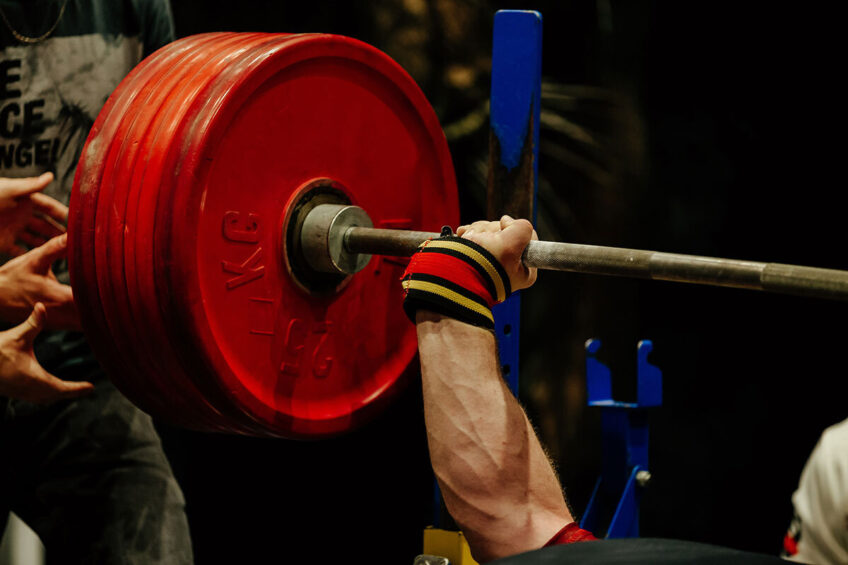Weightlifting: How to Protect Your Joints from Injury When Lifting Weights
While there's no substitution for weightlifting to build muscle mass, you need to protect your joints from unnecessary stress and avoid injury.

A form of resistance training, weightlifting encourages the development of bigger muscles by exposing muscle tissue to stress. Whether you’re bench pressing a weighted barbell, lifting dumbbells, or swinging a kettlebell, you are exposing your muscles to stress, which triggers a response by your body to rebuild the damaged muscle tissue bigger and stronger than before.
Unfortunately, weightlifting can also be taxing on your joints. You need to protect your joints.
It compresses tendons, cartilage, and ligaments where bones meet, often stressing these tissues beyond their physical capacity. While the human body can quickly and easily repair damaged muscle tissue, it takes longer to repair joint damage. You can still lift weights to build bigger muscles, but you should take precautions to protect your joints from injury.
Let’s discuss some ways to help keep your joints free from injury.
1. Dynamic Stretches
Before lifting weights, perform dynamic stretches to warm up your body and loosen your joints. Unlike static stretches, dynamic stretches involve the constant movement of your body or a part of your body.

Arm circles, for example, are considered a type of dynamic stretch since they require the constant rotation of your arms. Spend at least 5 to 10 minutes on dynamic stretches before hitting the weights.
Other dynamic stretches include:
- Walking lunges
- Torso twists
- Standing back stretch
- Toe touches
- Air squats
- Hand walks
2. Choose Lighter Weights
Lifting lighter weights can reduce your risk of joint injury. The more weight you lift, the greater the stress placed on your joints. Choose weights that are 50 percent to 70 percent of your one-rep max to protect your joints. You’ll have to perform more reps to achieve gains, but lifting lighter weights is easier on your joints than heavier weights.
Some bodybuilders may reject the notion of lifting lighter weights, believing it will hinder their ability to gain muscle mass. According to a study conducted by researchers from McMaster University, however, this isn’t the case.
After following 49 male athletes for three weeks, researchers from the Canadian university found athletes who lifted lighter weights for about 25 reps per set gained the same amount of muscle mass as athletes who lifted heavier weights for nearly half the number of reps.
3. Stay Hydrated
Hydration and joint health go hand in hand. Research shows the average adult’s body comprises up to 65 percent water. Along with regulating the human body’s internal temperature and aiding in digesting, water lubricates the joints so that the connected bones can glide smoothly. If you lift weights while dehydrated, the lack of lubrication in your joints could result in painful friction when moving the connected bones.

The amount of water you’ll need to drink to stay hydrated and protect against joint injury varies depending on your body weight. In the past, medical experts recommended a minimum of 64 ounces daily. However, new findings indicate body weight is a better baseline for hydration requirements.
To determine how many ounces of H2O you must drink daily, multiply your body weight by 66%.
If you weigh 200 pounds, for instance, drink at least 105 ounces of water per day.
4. Don’t Lock Your Knees
When performing barbell squats, leg extensions, or any other form of resistance weight training that requires you to bend your knees, don’t lock your knees. In other words, avoid fully extending your knees to the point where your legs' upper and lower portions are completely aligned.
Locking your knees shifts the weight stress from your muscles to your knee joints. Therefore, it’s easier to hold a position with your knees locked, but unfortunately, it increases the risk of joint injury.
5. Joint Protection Supplements
Taking the right joint supplements can increase your body’s defense against joint injury. Glucosamine is a popular joint supplement because of its ability to rebuild damaged cartilage and lubricate the joints. Our bodies produce some glucosamine on their own, but taking a glucosamine supplement ensures your body has enough of this amino acid to protect your joints from excessive wear and tear.
Another supplement that can lower your risk of joint injury when lifting weights is chondroitin sulfate. This chemical occurs naturally in joint cartilage. Taking a chondroitin supplement will encourage your body to rebuild damaged or weak cartilage.
However, turmeric is one of the best supplements you can take for its anti-inflammatory effects. Another great supplement is fish oil.
6. Mix Up Weightlifting with Low-Impact Exercises
Avoid spending all your time at the gym lifting exercises. Instead, mix up your routine by including low-impact exercises like using an elliptical machine, stair climber, treadmill, or even yoga classes for more body toning.

They aren’t as effective at building muscle mass as high-impact exercises, but low-impact exercises such as these are safer for your joints.
7. Rest after Lifting
Lifting weights on multiple consecutive days won’t increase your gains. It will only slow down your progress by restricting your body’s ability to heal the damaged muscle tissue while increasing your risk of joint injury in the process. If you don’t rest, your muscles and joints will continue to degrade.
For healthy joints, rest for 48 to 72 hours after lifting weights. You can perform other, lighter exercises during this time, such as aerobics. Still, you should avoid high-impact exercises that stress the same muscles and joints targeted during your previous workout.
8. Wear a Compression Brace or Use Wraps
Wearing a compression brace or wrap while lifting weights is beneficial for several reasons. First, it isolates specific muscles, allowing you to perform more reps per set. Second, it stimulates blood flow to feed muscle tissue with oxygen-rich blood. Third, when used on a joint, it stabilizes it to protect it from stress-induced injury.

If you’ve experienced pain or discomfort with a particular joint in the past, use a compression brace or wrap when lifting weights. You can find compression braces and wraps for the knees, wrists, elbows, ankles, shoulders, and more.
My Thoughts?
There’s no substitution for weightlifting if you’re trying to build muscle mass. It engages your muscles more force than your body weight to encourage bigger muscles.
But you need to protect your joints from unnecessary stress. Otherwise, you could sustain a joint injury that takes weeks or even months to recover.
Tony Lee, MS, RD
Tony Lee, RD, MS, is a highly qualified and accomplished Registered Dietitian with a Master’s Degree in Nutrition Sciences. Tony brings over two decades of experience in dietetics, specializing in sports nutrition. Interests include studying all aspects of wellness, fitness, genetics, and peak health performance.










